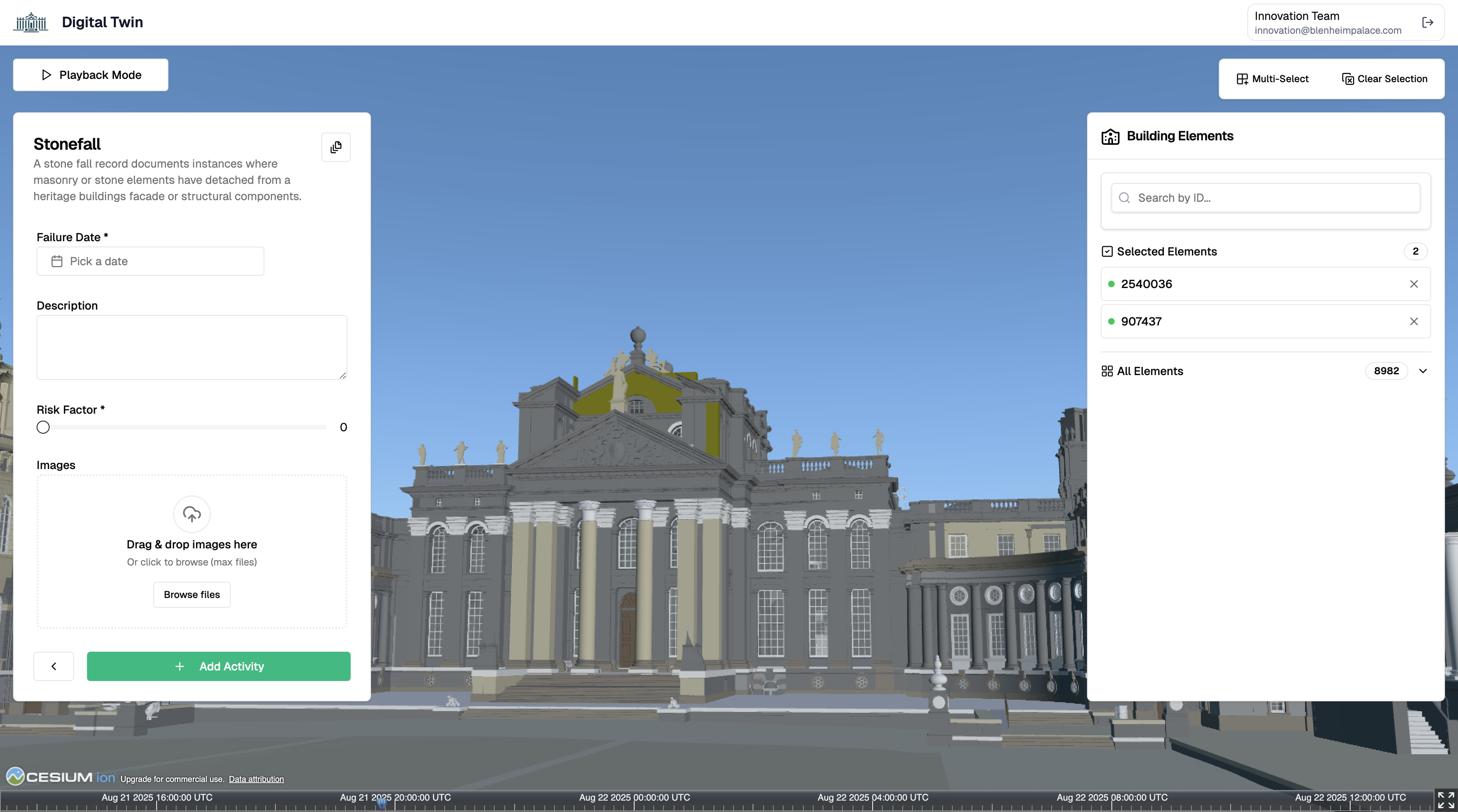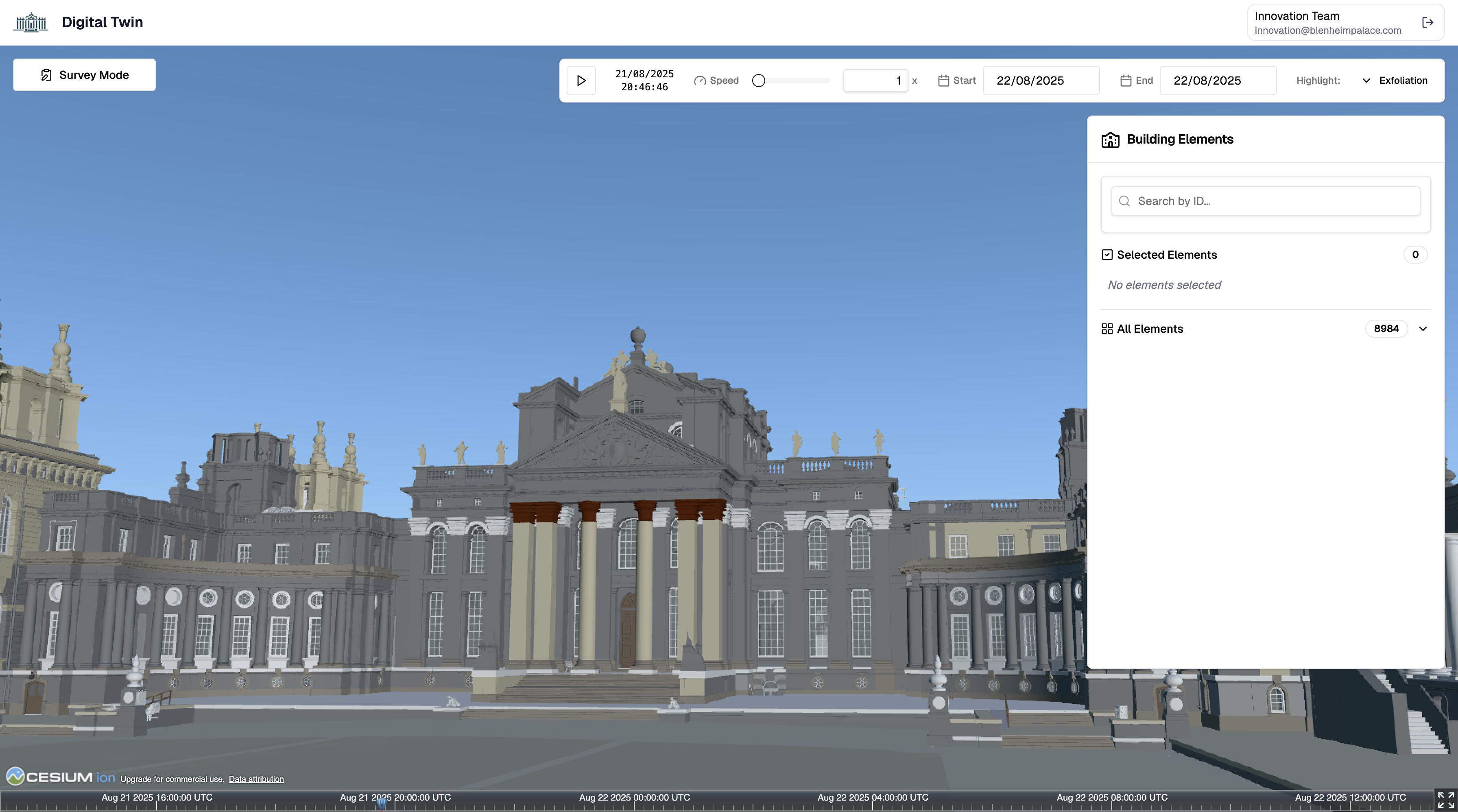Blenheim Digital Twin Project with the University of Oxford
Skills & Technologies
- JavaScript
- React
- CesiumJS
- REST APIs
- Node.js
- PostgreSQL
- UX/UI Design
- CI/CD
- IoT
Overview
This project was a heritage digital twin web app developed for Blenheim Palace to support long-term conservation planning. The aim was to build an interactive 3D model of the palace that could incorporate IoT sensor data and reported incidents or survey results, helping to highlight areas at risk due to environmental or structural factors. By integrating multiple sources of data into a spatially accurate model, the platform enables conservation staff to assess conditions and prioritise interventions more effectively.
Purpose
Blenheim Palace is a UNESCO World Heritage Site with significant historical and architectural value. As a visitor attraction, it faces challenges in maintaining the structure while ensuring visitor safety and satisfaction. Blenheim spends £4m/year on maintenance and restoration. The digital twin app provides a modern solution for heritage management by enabling data-driven decision-making, helping staff identify areas most at risk and prioritise interventions. By visualising sensor data and incident reports, the platform can optimise maintenance schedules, reduce unnecessary costs, and support more targeted restoration efforts. This aligns with my passion for using technology to preserve cultural heritage and improve public engagement with history.
UI Design

The interface prioritises clarity and functionality for conservation professionals, featuring an intuitive 3D navigation system with contextual data overlays and streamlined workflows for incident reporting and analysis.
3D Geospatial Visualisation
CesiumJS provides a 3D geospatial environment where the Palace model is rendered, allowing users to navigate and interact with the digital twin. Beyond basic exploration, users can isolate individual elements of the model, such as walls, roofs or structural components, to study metadata or linked data from associated reports. This capability allows reports, annotations or maintenance records to be attached directly to specific features, transforming the model into an interactive hub for both visualisation and data management.
Survey Reporting Workflow
I developed a form component that is populated by tables from the digital twin's database. This allows administrators to customise form fields and even create new survey forms as needed. On submission of a survey, the data is stored in the database and linked to the relevant part of the 3D model. This enables conservation professionals to log issues directly within the context of the digital twin, streamlining the reporting process and ensuring that all relevant information is easily accessible for future reference.
Playback and Analysis Tools

I also built tools to interact with time-series data linked to the digital twin. This includes a playback feature that allows users to visualise changes over time, such as environmental conditions or structural movements. Changes are highlighted along the CesiumJS timeline based on the form fields selected by the user, making it easy to track specific metrics. This functionality offers valuable insights into the dynamics of the Palace and supports proactive conservation efforts.
Project Outcome
The Blenheim Digital Twin application is a fully operational enterprise web app, currently in active use at Blenheim Palace for logging and managing maintenance activities. The platform has streamlined conservation workflows and improved data accessibility for the estate's team.
Beyond Blenheim, the app is being showcased to heritage sites and organisations across the UK and Europe, where it has attracted significant attention for its innovative approach to digital asset management and conservation. Its success is opening new opportunities for collaboration and adoption within the wider heritage sector.